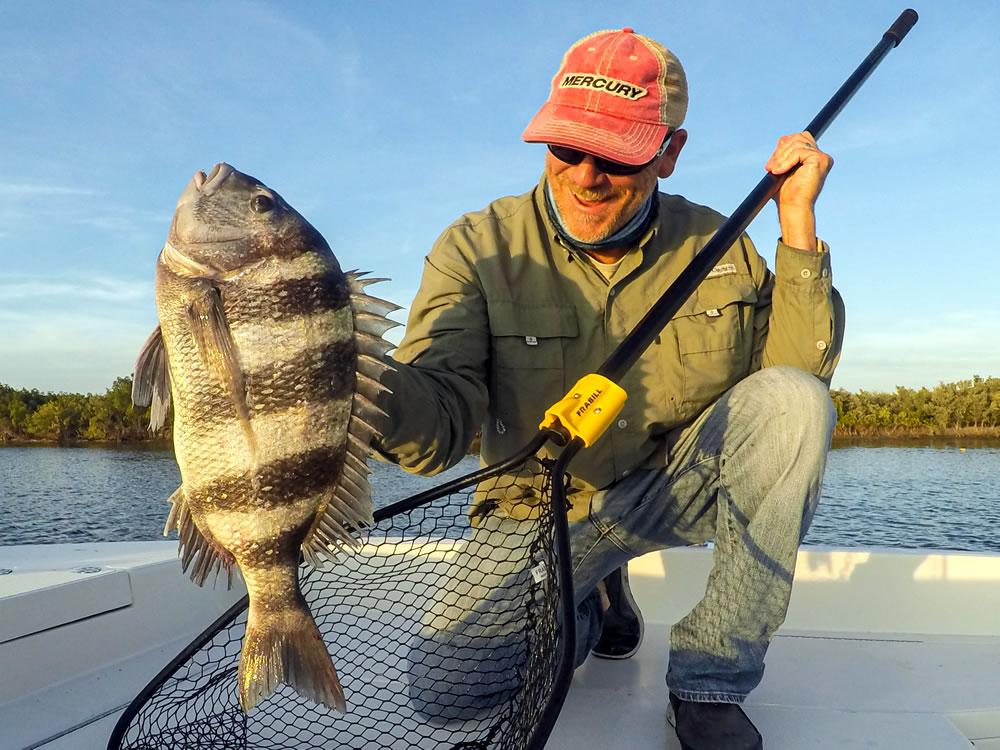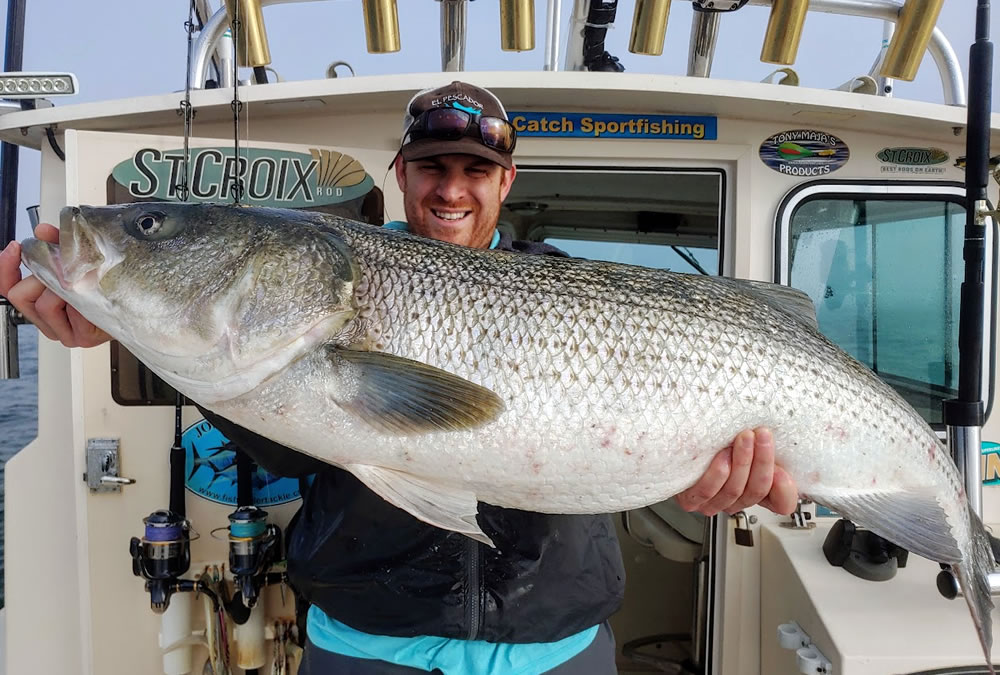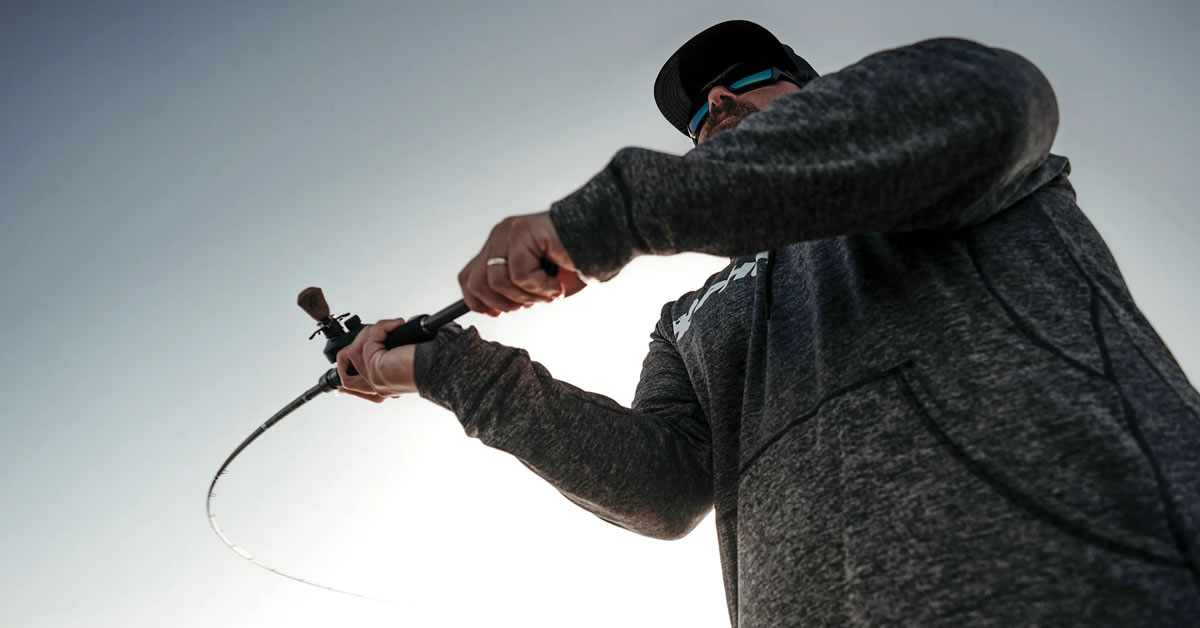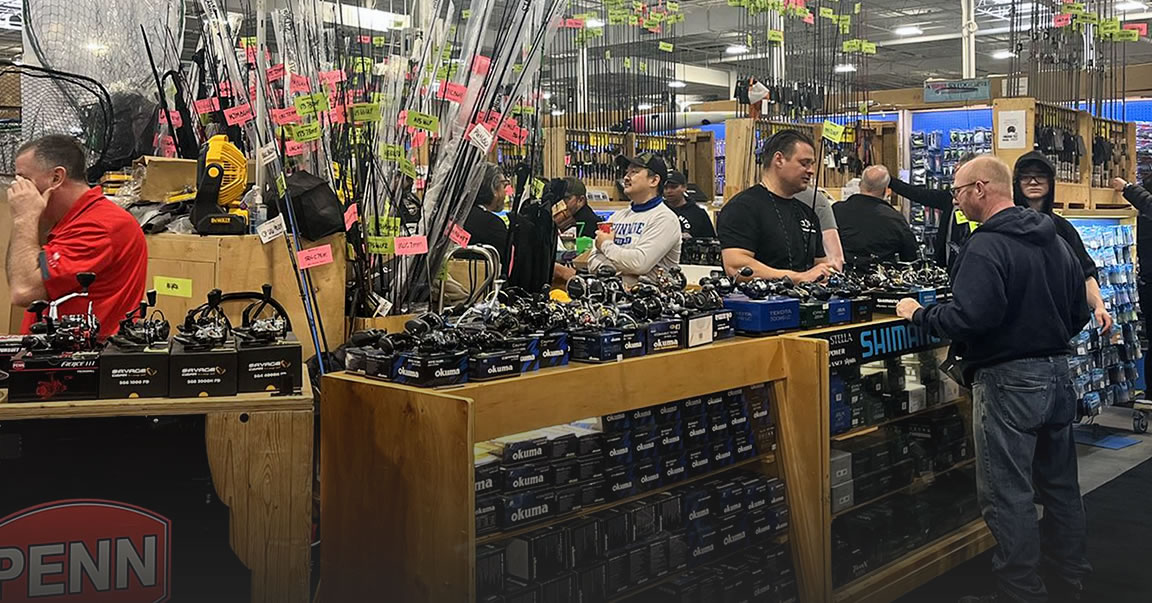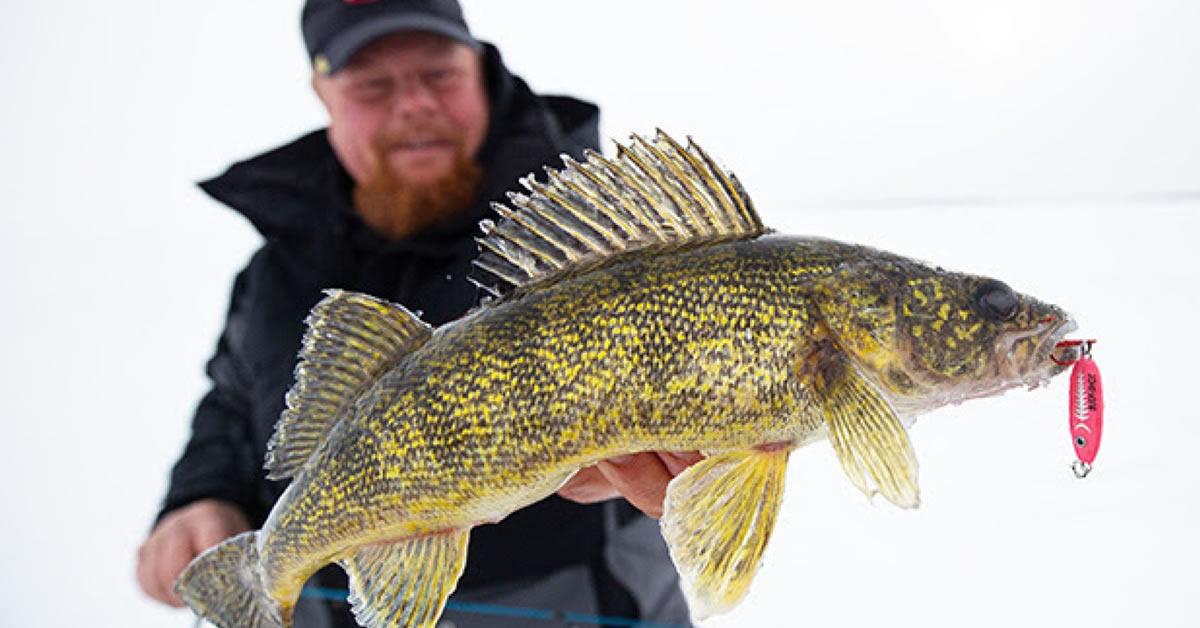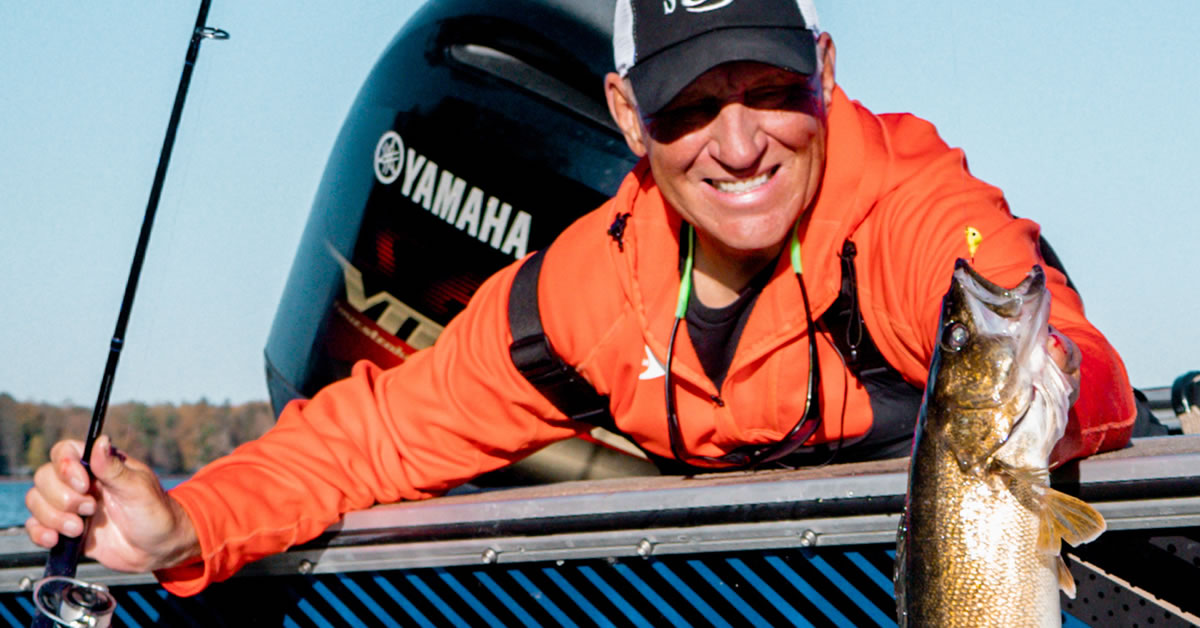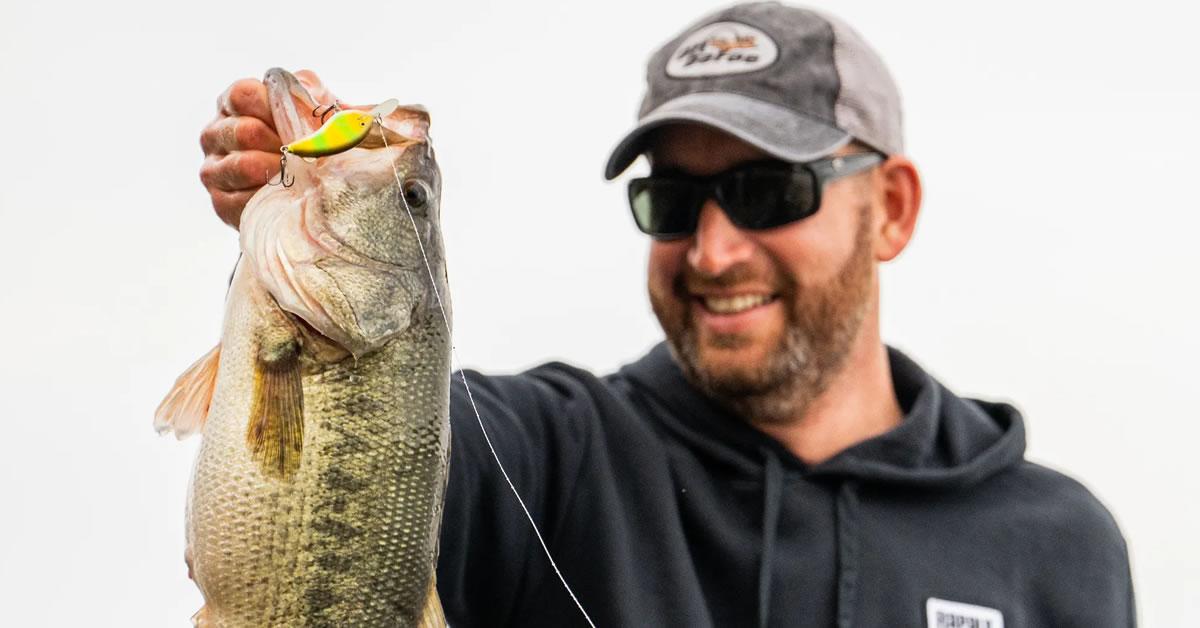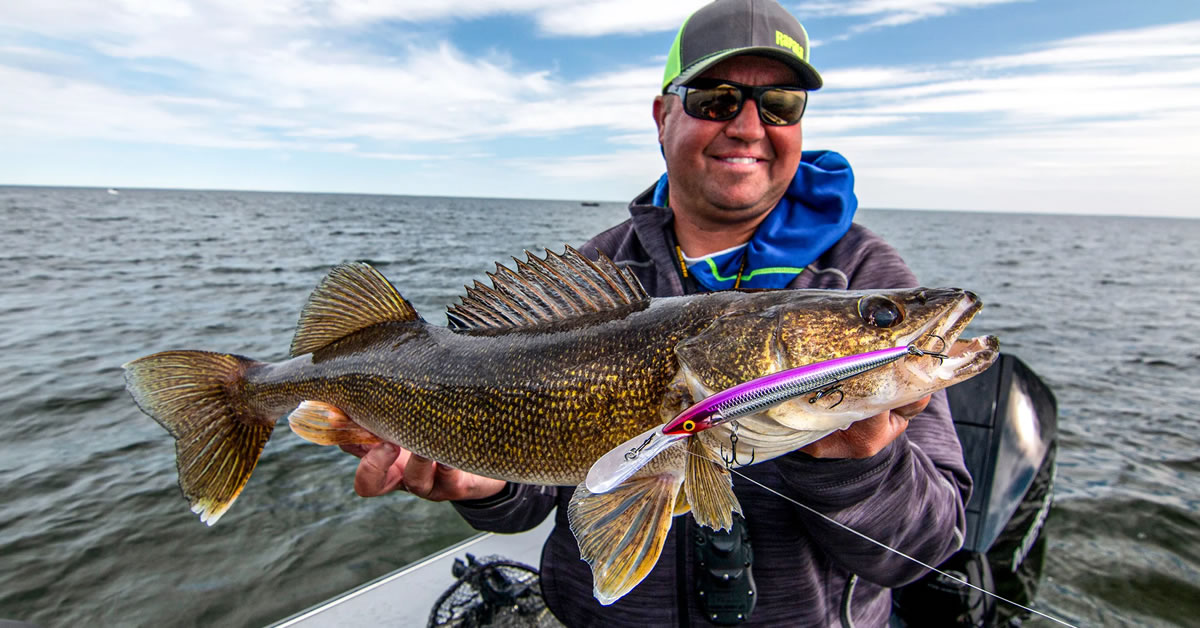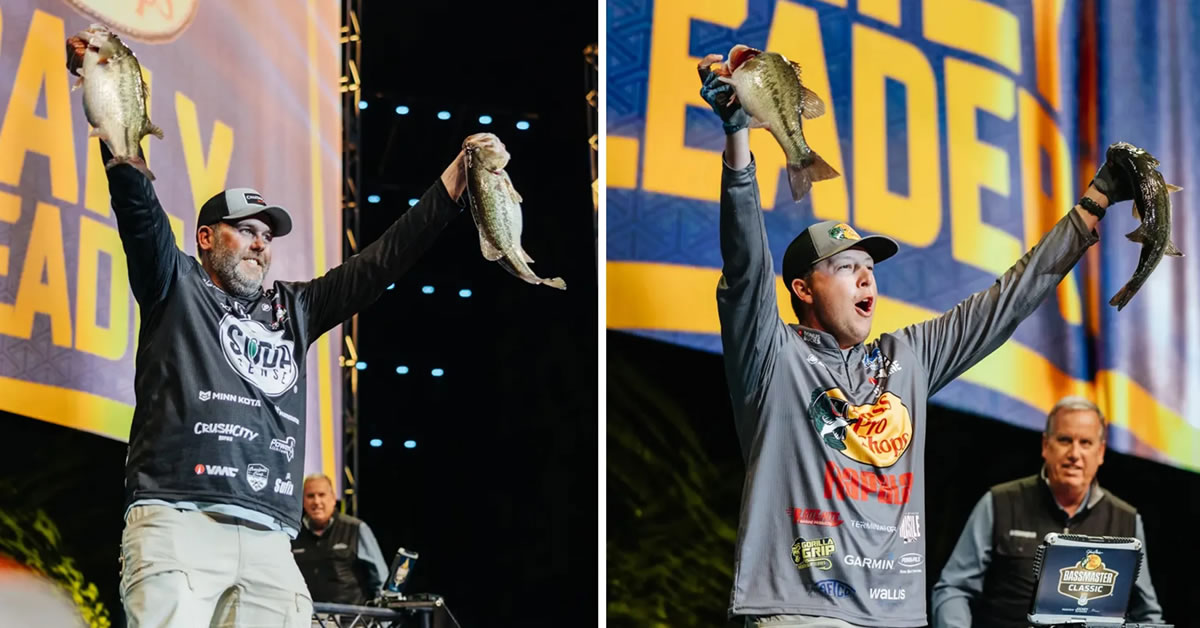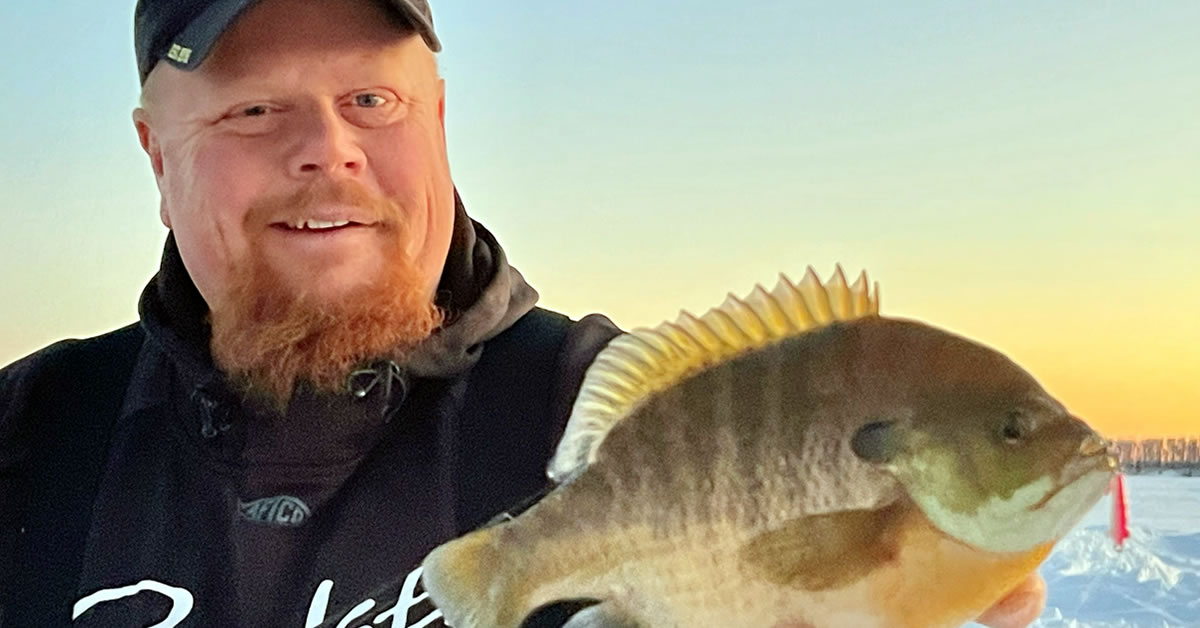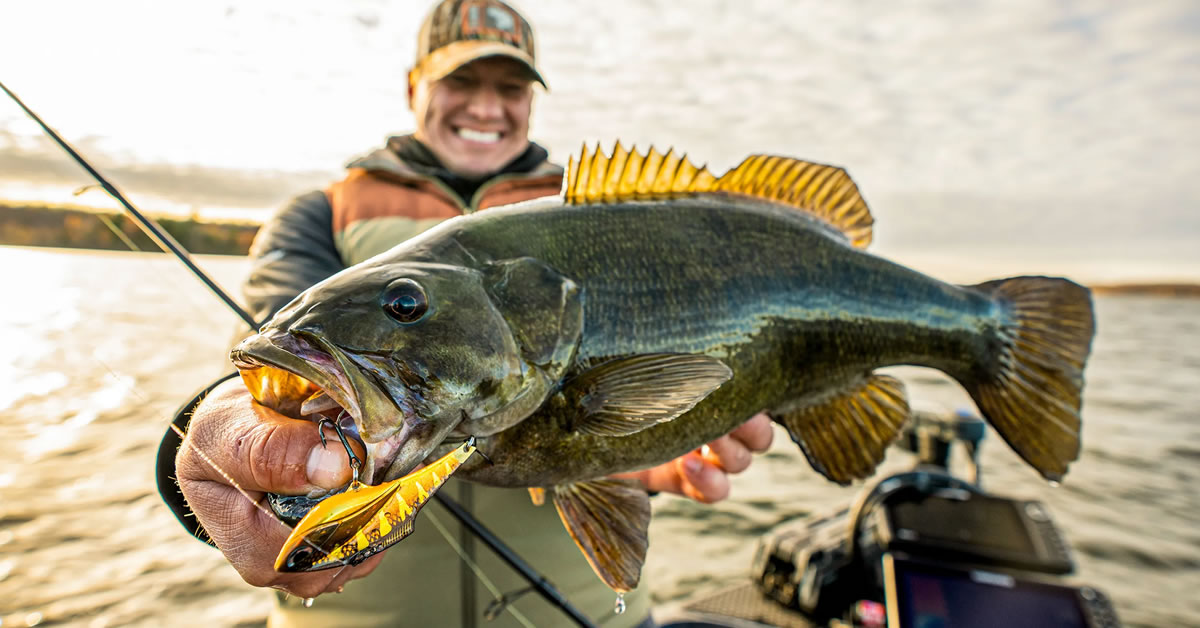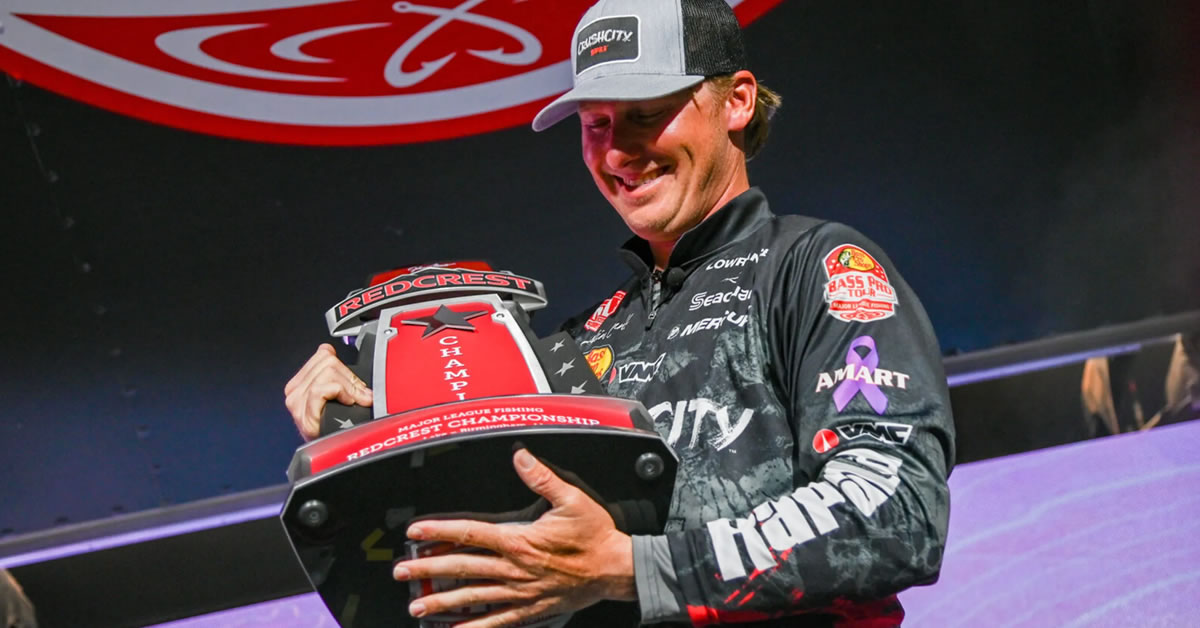Saltwater Anglers Share Favored Fall Fishing
Regardless of where you live or fish, spend enough time on your home waters and you'll experience some incredible events. You'll see things, put together clues, and identify patterns and presentations that lead to truly unique angling opportunities. It may be a mass concentration of a single species to spawn; a baitfish migration; an epic forage hatch; or simply a brief but predictable window of intense feeding activity. These are the kinds of events that don't happen often. They may last for hours or weeks, but anglers who are there for the fun capitalize, learn, and make memories.
Whether inshore or offshore, the best fall saltwater fishing is often bait driven. These predictable bait migrations are the common denominator that unlocks epic bites throughout the coming months. We asked avid Florida angler and fishing promoter, Joe Balog, to share insights on his favorite inshore bites, and New Jersey charter captain, Jim Freda, to drill down on fall nearshore and offshore opportunities in the Northeast.
Joe Balog on Fall Inshore Fishing Along Florida's North-Central East Coast
When he isn't hunting double-digit largemouth bass near his home in DeLand, Florida, St. Croix Rod staffer and fishing-industry promoter, Joe Balog, most often fishes the inshore areas around Daytona Beach. "We don't have a massive fall mullet run here like we do south of Cape Canaveral. It's more like a trickle," he says. "But we definitely do have significant baitfish migrations… a lot of sardines, pilchards and some mullet," continues Balog, adding that the increased bait numbers start building in inshore areas throughout September. "It moves in and out of the inlets with the tides, and anglers start to key on bigger predator fish like redfish, tarpon and snook. Trophy 40" redfish are the targets for a lot of anglers here in October. It's fun but it's kind of a one and done thing for me," Balog admits. "I really prefer snook, trout, flounder and sheepshead."Balog says Daytona-area snook - his favorite inshore targets - aren't the same as anglers in South Florida may be used to. "Here, it's those high 20-to-30-inch fish. They really stack up in the mangrove areas within a couple miles of the inlets. It's largely a falling-tide game but you can catch them on all tides," says Balog, who prefers to target fall snook on artificials as opposed to live mullet. "I'm usually casting a Zara Spook or a ¾-oz. 5" swimbait," he offers. "Soft-plastic flukes can also be good and a lot of fun when the tide slows down."
Balog says the problem with fishing live mullet around the mangroves is that you need to peg them to the bottom. "Freelined, they swim so hard that they will flee into the mangroves," he says. "They'd rather jump onto the land or into the trees than get eaten, so I prefer to avoid those headaches and just fish with lures."
For Balog, a 7' medium-heavy power, fast action rod is the way to go for all of his favored fall snook presentations. "I use the same rod for topwater and swimbaits," says Balog, who favors the St. Croix Mojo Inshore Series JIC70MHF casting rod rigged with 30-lb. Suffix braid and a 25-lb. mono leader for topwater or a 25-lb. fluorocarbon leader for swimbaits. "In my opinion the Zara Spook is the best artificial snook lure in the world, and big jacks love them too," he says. "This rod fishes them perfectly." Balog says fishes the Ghost White and Bone colored spooks almost exclusively.
Balog is also a freak for flounder, especially in the fall. "The flounder migration is kind of a mystery, but FWC (Florida Fish and Wildlife Conservation Commission) says there is an influx of flounder coming into our inlets to spawn in the fall," he says, adding that there's a closed season from October 15 through November 31 to protect valuable spawning stock. "The fishing is great on either end of the closure," he adds. "I use live finger mullet in the three-to-five-inch range on a fishfinder rig, which consists of a one-to-two-ounce egg sinker above a swivel tied to a short, six-to-18-inch 40-lb. fluoro leader terminated at a size 1-to-2/0 Kahle-style wide-gap hook.
"People tend to anchor up and fish them like catfish," Balog says. "But I use my trolling motor to position myself on the down-current side of flounder-holding structure - it could be a bar, a jetty, a rock or debris pile, or even a buoy anchor - pitch up onto the structure and hop the rig back until it's directly under the boat," he says. "Then I'll slide back and make another pitch. You seem to find these relatively small, active zones where you might catch five fish on five casts. They're a lot of fun and great eating," adds Balog, who says flounder in his area need to be 15" to keep, but the good ones range from 18" to 22".
Balog says it's surprising how many fish follow the live mullet back and hit right under the boat. "You're really just lifting and dropping and letting the current hop the bait back to you along the bottom," he says. "I use the same length, power and action Mojo Inshore rod for flounder as I do for snook - a 7' medium-heavy, fast - but prefer it in a spinning configuration (JIS70MHF)," he says.
Come November and December, Balog says another of his very favorite inshore fish really start making a scene. "We have sheepshead in the Intercoastal all year 'round, but the big, winter spawners start concentrating in larger numbers in the late fall. Certain docks, jetties and structures seem to hold more numbers of bigger fish better than others," says Balog, who started using an underwater camera to fine-tune his sheepshead hunting a few years ago. "That camera really helped me discover these concentrations of bigger fish," he says. "But catching them is the real challenge. They can steal bait like no other fish."
Balog says fiddler crabs and shrimp are the most common sheepshead baits, but he uses sand fleas. "I don't buy bait," he says. "Sand fleas are easy to dig on the beach and they work great." Balog says he used to fish a lot of knocker and fishfinder rigs when targeting sheepshead, but now favors a dropshot rig. "You've really got to get into or right up next to the structure, so getting snagged can be a real problem. A dropshot works great at getting bait up tight against the structure in the current. You might be fishing three feet or 20 feet down, and a dropshot allows for that straight, vertical presentation. Slower tide swings are best because you have maximum control and feel."
Balog prefers a slightly longer 7'6" medium-heavy, fast action Mojo Inshore spinning rod when dropshotting for sheepshead. "The longer rod just gives more control and an overall better feel," he says. "I'll position the structure slightly behind the boat - down current - and fish back to it. You can get them to bite on a tightline."
Whatever you use for bait, Balog advises bringing a lot of it. "Some days it seems like it may take 20 sand fleas to catch two sheepshead," he says. "A dropshot rig increases production. I'll use a VMC Spinshot hook or a wide-gap size 1 or 1/0 hook with anywhere from ½ ounce to one ounce of weight. When the big fish start to concentrate well, I have a milk run of sheepshead structures I'll fish. I just bounce around, mark them and drop down to them. They're incredibly fun to catch and are super good eating. You only need a couple for a great meal."
Captain Jim Freda on Fall Nearshore and Offshore Fishing Along the New Jersey Coast
Captain Jim Freda has been a St. Croix Pro Staffer since 1996. He lives along the central New Jersey coast and has been fishing those waters from his home port of Manasquan Inlet for the past 42 years. He's part of Shore Catch Guide Service, a seasoned team of nationally recognized guides and captains and one of New Jersey's premier inshore and offshore saltwater guide services."My inshore chartering area covers Sandy Hook Bay south to Island Beach State Park - approximately 40 miles - where I target trophy striped bass, bluefish, and false albacore," Freda says. "This fishery is special because we catch striped bass up to 50 pounds with 30-40 pounders being commonplace on light tackle casting topwater plugs and poppers." Freda says live bait such as the Atlantic menhaden (aka bunker), also accounts for many trophy fish.
"Offshore I charter the waters of the famed Mud Hole, 15-20 miles from port, all the way out about 80 miles to the edge of the Hudson Canyon. We give clients, inshore, midshore, and offshore pelagic opportunities. Targeted species offshore are bluefin and yellowfin tuna, mahi, and white marlin. This fishery is special because of the sheer numbers and size of the bluefin we have been seeing in the last ten years. Giant bluefin are legitimate targets in our area, as are the more common 30-80-pound bluefin and yellowfin that we target on light tackle by jigging, casting, or trolling. In November and December, we have a tremendous run of bluefin from 3-15 miles out as they migrate back to their North Carolina wintering grounds.
"October and November are always exciting months at the Jersey Shore as we see our fall migration of baits taking place along our beaches," Freda says. "These migrations are the impetus that can lead to the kinds of all-out blitzes that every angler dreams of casting into. During these two months one can find large concentrations mullet, spearing, bay anchovies, snappers, peanut bunker, adult bunker, and sandeels. These baits fuel frenzied feeding of striped bass, false albacore, bluefish, and the occasional inshore bluefin. For striped bass we are limited to fishing within the state-legal three mile limit. For all other species we can venture out pass this line into federal waters. A lot of our fishing during these two months is highly visual as we are looking for surface feeds that will pinpoint the action. Fish corralling and busting through the baits along with Hitchcock-style bird action really gets the adrenaline pumping."
Freda says hook-ups are guaranteed when the blitz is on. "When these feeding frenzies are taking place, dropping a sandeel imitation-type jig like a 120-gram Nomad Streaker or a 100-gram CB One F-1 on our St. Croix 6'6" Mojo Jig medium-heavy rods is deadly," Freda reports. "Violent hits take place, doubling anglers over the gunnels. In early October, these surface blitzes are almost all false albacore, and we employ a safe run and gun method to get our clients on the fish. Moving quickly from pod to pod as they pop up here and there is highly effective. Come November the bites are almost all striped bass and bluefish. Near the end of November we also have a shot at getting bluefin from 3-15 miles out as they migrate south. These tuna can range from footballs to over 200 pounds."
Freda says St. Croix 6'6" medium-heavy Mojo Jig spinning and conventional rods are ideal for jigging up almost any species he's marking beneath his 28' Parker. "When your fishfinder lights up like a Christmas tree with bass under the boat, clients can jig using either the snap-jig method bouncing the bottom or the butterfly method when they drop down to the bottom then retrieve by making one lift of the rod paired with one turn of the reel in a series of short pumps," he says. "Reel cadence will vary but a fast pace is usually favored over a slow retrieve as sandeels are darting and squirting quickly in every direction. The jigs we use mimic these motions. The Nomad Design 80-120-gram Streaker jigs in the sandeel, blue, or pink sardine colors are absolutely deadly, and 80-100-gram CB One F-1 jigs from Saltywater Tackle also account for many bass."
Freda says trolling is also highly effective in fall. "Trolling with our 7' medium-heavy and heavy power Mojo Salt conventional rods is the ticket when the bait is spread out and we need to cover ground to locate the fish, especially when adult bunker show up on the scene," Freda says. "We will troll large baits such as bunker spoons, mojos, and shad rigs, as well as sandeel rigs If sandeels move in thick."
Freda dives deeper into his rod choices. "Mojo Salt and Mojo Jig rods provide plenty of power and leverage to subdue any of our targeted species," he says. "They are also light enough that our clients can enjoy fishing with them all day without getting overly tired, and still have fun fighting smaller fish without feeling over-gunned. Most importantly, these two diverse rod series include all the right lengths, powers and actions that perfectly support any presentation we need to make to any fish."
Parting Words
Autumn's epic bait migrations make for exciting and rewarding saltwater fishing along almost any coast. Trust in our experts' advice - along with handcrafted St. Croix performance - to give you the upper hand while targeting and doing battle with the fat fish of fall.#stcroixrods





